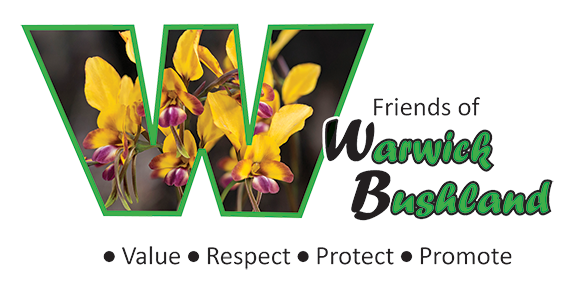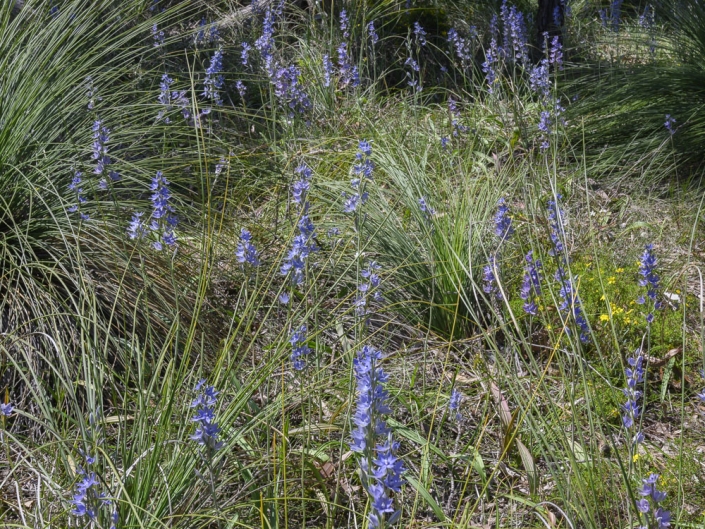Point of Interest 20: South Gate
This Point of Interest (POI) is the end of the jarrah trail (or start) at the gate on Lloyd Drive north of school (Southern Gate). This is a shady area where with large tuarts close to the gate and large jarrahs elsewhere. Understorey vegetation is in very good condition with balgas, sedges, irises, shrubs and herbs (see POI 17-19 for seasonal wildflowers). Blue Sun Orchids grow under Jarrahs near the gate.
Note if you are starting the Jarrah Trail from this end, you should read the background information and instructions provided. The carpark across the road is the meeting place for Friends of Warwick Bushland events. You can find out more about friends group activities, which include bushcare days and guided nature walks, from the calendar on the Home Page.

Common Wildflowers (see Point of Interest 19)
Focus Topic 41. Site Management
Warwick Bushland is jointly managed by the City of Joondalup in collaboration with the Friends of Warwick Bushland. The Jarrah Trail is a focus are for bushcare activities led by the friends group including hand weeding, planting and orchid recovery projects. You can join them on alternate Saturday mornings, as explained by signs and notices on the website and Facebook (see Homepage).
Human impact is the greatest threat to the fragile ecosystems that exist within the Warwick Conservation Reserve. It is essential that in order to preserve the flora, fauna and fungi species that grow here, you remain on designated pathways, keep dogs on a leash and do not take anything away from the bushland. All native plants and animals are protected so cannot be picked or harmed. Over the years there have been major impacts from fire, grazing and rubbish dumping in this reserve. Please contact the City of Joondalup if you find signs of recent disturbance or rubbish dumping.
Focus Topic 42. Blue Sun Orchids
The Large Blue (or Scented) Sun Orchid (Thelymitra macrophylla) was uncommon in Warwick Conservation Reserve in the past but has spread rapidly in recent years. It is now one of the most common and spectacular orchids here, found in groups with dozens or hundreds of plants. Sun orchid flowers only open on warm sunny days in mid spring. They differ from other orchids because the petals in their star-shaped flowers are uniform in size and shape. Most other orchids have a labellum, a modified petal that plays an important role in pollination by insects. These sun orchids have large spikes with up to 40 colourful flowers that can be sweetly scented. They attract pollinators that confuse them with other blue flowers that appear in mid to late spring, but insects cannot find food so will not visit flowers for long. The Morning Iris (Orthrosanthus laxus) is the most common species flowering with Blue Sun Orchids and may be the real target of pollinating insects they deceive. Visual deception leads to low rates of pollination, at about 5% of flowers. However, on average, spikes have 17 flowers and form sufficient seed to support substantial local population increases. Seedlings have been observed near this trail.








